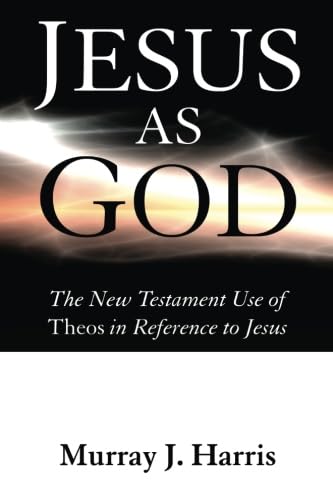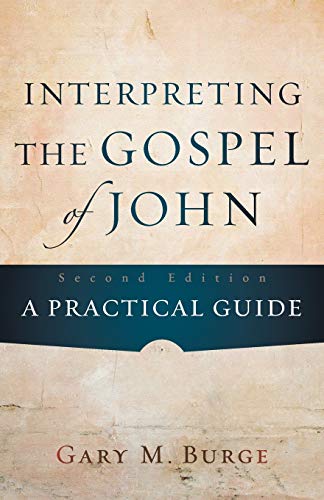Volume 19 - Issue 1
READERS’ RESPONSES: Is our understanding of the history of geology and historical geology on the rocks?
By Michael B. RobertsIt is good that Themelios reviews books wider than the narrowly theological. However, I am a little concerned with the review of Bowden’s Science vs Evolution (Themelios 18.3, p. 32). Though science may seem to be beyond the usual remit of Themelios, Bowden raises both scientific and historical issues which affect our understanding of creation and impinge on our understanding of the 19th century.
William Kay refers to evolutionary hoaxes, like Piltdown and Haeckel’s touching up of embryos. As these were exposed by evolutionists, and neither Piltdown Man nor Haeckel’s ‘recapitulation’ fits in with modern evolution, these can equally well be used to show how honest evolutionists are! But before creationists pat themselves on their backs, they need to consider some of their own arguments and see if they are hoaxes. Sadly, many of them are, and I shall mention a few of Bowden’s.
The first one (cited approvingly by Kay) is the circular reasoning of the evolutionary uniformitarian column hoax. This must be one of the most persistent creationist hoaxes. The geological column is neither evolutionary nor uniformitarian, nor is it based on circular reasoning from fossils.
The geological column was set up from 1790 to about 1815 by William Smith in England and Cuvier and Brongniart in France.1 All were catastrophist and creationist and rejected the evolutionism of Grandpa Darwin and Lamarck, who published in 1803 and 1809, after the principles of producing the geological column were worked out. Thus it can be definitely stated that the geological column is totally pre-evolutionary. It is highly probable that Smith had not heard of Hutton when he first produced a column, and it is likely that Cuvier would have ignored Hutton, and from 1810 was Lamarck’s most able and formidable opponent. Later, in the 1830s and ‘40s, the column was extended to include the Lower Palaeozoic by Sedgwick and Murchison, who also rejected evolution and were not uniformitarian in the Lyellian sense. Bowden is totally incorrect to say (p. 10) that in the ‘principles of geology’ ‘Lyell laid the foundation for the classification of many of the geological strata as they are taught today’. (Referring to his classification of the tertiary into Eocene, etc., the names ‘Eocene’, etc., were coined by Whewell, who rejected Lyell’s uniformitarianism.) Lyell simply took over the ‘catastrophist-creationist’ geological column of his predecessors and wove in his uniformitarianism, which was partially based on the work of Scrope and Rev. John Fleming (a Scottish Presbyterian minister who was at the forefront with T. Chalmers at the Disruption of 1843). So uniformitarianism has a good evangelical pedigree! Most geologists, including Lyell, thought the geological column was anti-evolutionary, until after Darwin used it to support evolution in 1859. Further, both pro- and anti-evolutionists in the 1860s accepted the geological column and its attendant vast ages.2
The charge of circular reasoning is an old one and goes back at least as far as The Genesis Flood.3Fossils are used to give relative ages of strata because geologists observed that different layers had different fossils. Smith observed this in two parallel canal cuttings and found the change in fossils always followed the same order of strata. When he first did this he did not even know the names of the fossils. His method was simply an extension of the principle of superposition, which makes the obvious observation that in a pile the stuff at the bottom got there first. That’s what would be expected from gravity. (Exceptions occur when the pile is disturbed, e.g. when it is turned upside down, or something is forced in from underneath.)
In fact, fossils are not necessary to produce the geological column. Some historians question how far Smith used fossils to produce his columns (the first appeared in about 1795) and Sedgwick did not use fossils for the Cambrian of Snowdonia. As there are no zone fossils for the Pre-Cambrian, producing the geological column for that era is difficult but not impossible, as I found when producing a geological map of a few thousand square miles of Pre-Cambrian in South Africa. As I did not use a single fossil, I cannot have used circular reasoning.
The claim of circular reasoning is thus false because it is based on a false understanding of both the history and methodology of geology, and one hoax is laid to rest.
The second hoax concerns one of the most commonly cited errors of radiometric age-dating—the three-billion-year-old lava from an 1801 eruption on Hawaii. This is cited in Bowden (p. 117) and confused Bernard Levin in The Times; he later suggested geochronologists should take up basket-making.
On following up the Hawaiian work, one finds that Bowden neither understood nor correctly reported the research. The title Radiogenic Helium and Argon in Ultramafic Inclusions from Hawaii indicates that the determinations were not on the lava but on inclusions in the lava, which come from deep mantle rocks; thus, as the authors pointed out, the resultant ‘ages’ were geologically meaningless. This particular work was one of many carried out in the ‘60s to see which rocks are suitable for age determination and which are not. This and the other example of deep-sea basalts from Hawaii are the exceptions, as almost every other recent lava flow gives ages approaching zero.
The rest of Bowden’s critique of age-dating is also flawed (as is any creationist critique), and thus we have another hoax.
I am sure readers of Themelios would not be interested in much more scientific argument, but I could discuss many more hoaxes: the polystrate fossils hoax, the rate of deposition hoax, the decay of the earth’s magnetic field hoax, the decay of the speed of light hoax, the shrinking sun hoax, etc., culminating in the Paluxy River hoax, which is now admitted. Perhaps this explains the ‘vituperation and detestation’ referred to by William Kay. This is by no means one-sided. Those of us who cannot accept the young-earth, anti-evolutionary stance often receive vituperation as liberals, denigrators of the Bible, etc., etc. Shoddy scholarship, whether theological, historical or scientific, needs to be criticized. Sadly, the persistence of the hoaxes I list above shows that creationists are not prepared to listen to criticism, whether from fellow evangelicals or anyone else. This has created ill-feeling and division among evangelicals and absorbs much energy which should be directed at Richard Dawkins and others who present atheism as the only scientific alternative.
Bowden will not bring down evolution, but he will provide ammunition for the Dawkins and the Cupitts of this world and may well prevent scientists from becoming Christians. Far better to follow the careful and reverent scholarship typified by members of Christians in Science and the American Scientific Affiliation, especially R. Forster, P. Marston, D. Livingstone, E. Lucas, C. Russell, M. Poole, R.J. Berry, D. Young, H. van Till and many others. Read them instead4
1 P.J. Bowler, The Fontana History of the Environmental Sciences (1992); Colin Russell, Crosscurrents (IVP, 1985).
2 D. Livingstone, Darwin’s Forgotten Defenders (Scot Acad Press/Eerdmans, 1987).
3 Morris and Whitcomb, The Genesis Flood (1961 and many reprints).
4 At the risk of being selective, Forster and Marston, Reason and Faith, is one of the most useful.
Michael B. Roberts
Secretary of History and Philosophy of Science Group (Christians in Science) and OU tutor in Religion in Victorian Britain






